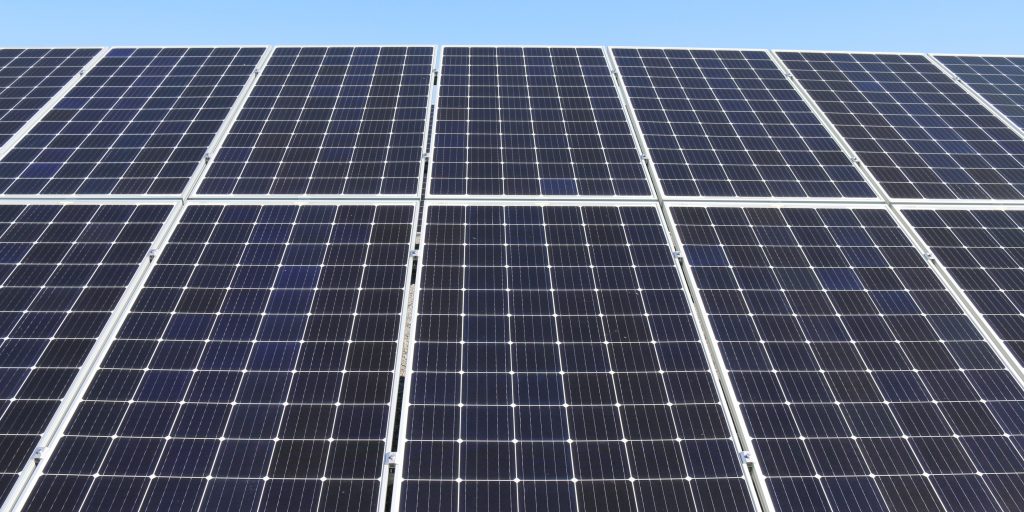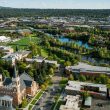Creating the modern community through sustainability
Municipal leaders are always looking for new opportunities to deliver highly innovative, connected and resilient infrastructure to residents and visitors. But they are also tasked with balancing this future-forward vision with an ongoing need to retain capital, especially after almost two years of crisis. By investing in sustainability and decarbonization, local governments can save valuable resources while creating modernized, highly efficient facilities and spaces that will support a thriving community and attract increasingly green-minded property buyers for generations to come.
Integrating data-driven solutions for advanced insights
Data is proving to be the key component in any energy and cost efficient facility. Leveraging data-powered building automation platforms that connect a wide variety of systems and technologies, facility managers can optimize operations at every touchpoint to minimize energy, water and resource waste.
The advanced analytics provided by an integrated platform allow facility managers to identify and even predict inefficiencies in their facilities for rapid remediation. This includes issues like water waste due to pipe leaks, energy overconsumption as a result of aged equipment and more. Smart buildings can even leverage historical occupancy data to predict when and how systems will be used on a daily basis, automating building systems like lighting and HVAC to deliver a personalized occupant experience that minimizes utility waste. For example, a community center’s building systems can automatically activate and deactivate in meeting rooms according to the center’s activity schedule, allowing for cooling systems to kick in for senior exercise classes and lighting to dim in preparation of youth film clubs. Energy is only used when needed and at the ideal levels to keep expenses down.
Reducing costs with renewable energy and energy efficiency solutions
In addition to upgrading building controls, implementing renewable energy and energy efficient solutions in municipal facilities and spaces can minimize utility costs while supporting ambitious net zero goals. Energy efficiency applications can include LED lighting on a park’s sidewalks or solar panels installed on a library’s roof and can help cities and towns make significant gains towards their decarbonization targets.
To reach its own renewable energy goals, the Housing Authority for the City of Pueblo (HACP) in Colorado constructed a solar garden comprised of photovoltaic (PV) systems as part of a community-wide sustainability initiative. The solar garden was designed to generate enough energy to power 200 households each year, which will be allocated to multifamily affordable housing as well as qualified, low-income citizens. The project’s energy savings will support a community solar benefit plan to provide educational and employment opportunities for city residents. By investing in renewable energy, the City of Pueblo provides long-term community enrichment, sustainability and modernization.
Creating a roadmap to sustainability, innovation and cost efficiency
Embarking on a sustainability initiative is a daunting task, especially when it is a community-wide program that spans multiple facilities and spaces. By working with an expert buildings partner, municipalities can create a manageable roadmap to keep projects on schedule and under budget.
The selected partner can work with municipal leaders to audit their buildings, identify areas for improvement, set achievable goals and recommend solutions to reach them. To help cities make critical infrastructure improvements while retaining much-needed capital, the partner’s financing experts can identify innovative funding procurement methods that align best with their needs. For instance, under a performance contract all updates are paid for over a fixed period of time by the project’s guaranteed energy and utility savings. Additional funding methods include private-public partnerships (P3), Net Zero Buildings as a Service and more. To stretch their dollars even further, state, local, territorial and tribal governments can access federal and state relief funds, such as those included in the American Rescue Plan.
Looking ahead, the town or city of the future will be data-powered to provide personalization and optimization at every touchpoint—committing to a sustainability initiative now is a powerful way for communities to make that vision a reality. By investing in energy efficient and renewable energy infrastructure improvements across facilities and outdoor spaces, communities can reach their cost reduction and innovation goals while meeting the needs of future generations.
Lisa Brown is the senior national director of municipal infrastructure and smart cities for Johnson Controls, where she is responsible for growth of the local government market in North America. She has more than 25 years of experience in leadership roles in strategic planning for energy services companies and startup firms.




















